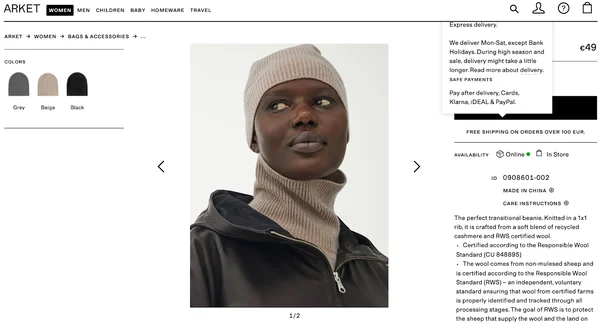Not All D2C Products Are Created Equal: Why Weight & Price Matter More Than You Think
When most people talk about launching a D2C (direct-to-consumer) brand, the conversation typically centers around product differentiation, branding, influencer marketing, and customer acquisition. All crucial, yes—but there’s a less sexy, less talked-about set of factors that can make or break your business: product weight and price.
These two variables have an outsized impact on everything from unit economics and logistics to customer experience and scaling potential.
Let’s break down the four main product categories and the hidden trade-offs behind each.
1. Low Weight, High Price
Examples: Luxury skincare, supplements, jewelry, designer accessories
✅ Pros:
- Lower logistics costs: Shipping is cheaper and more efficient; you can fit more units per shipment and keep fulfillment lean.
- High perceived value: Customers expect to pay more for smaller premium items, especially if branding and positioning are on point.
- Easier international expansion: Lightweight products simplify cross-border shipping, reduce customs friction, and open up global markets.
⚠️ Cons:
- Trust is harder to earn: With higher price tags come higher expectations. You need stronger storytelling, clear value propositions, and sometimes even clinical proof or guarantees.
- Higher return rates: Customers may be more critical or hesitant post-purchase, which can hurt your margins if your return policy isn’t airtight.
💡 When to Choose:
If you’re bootstrapping or looking for faster profitability with less capital risk, this is the best category to start in.
2. High Weight, High Price
Examples: Furniture, gym equipment, premium appliances
✅ Pros:
- High perceived value: Heavier, substantial items feel worth the money. Consumers often equate weight with durability and premium quality.
- High AOV (Average Order Value): Higher prices mean more revenue per transaction, which helps offset high acquisition costs.
⚠️ Cons:
- Logistical complexity: Shipping is expensive and prone to damage. You might need to deal with freight, LTL (less-than-truckload), white-glove delivery, and return logistics.
- Cash flow risk: Holding and storing bulky inventory eats into your capital. Warehousing becomes a significant cost center.
💡 When to Choose:
This category can work well if you have strong operations and funding. It’s not for the faint of heart, but the reward can be worth the risk.
3. Low Weight, Low Price
Examples: Snacks, fashion accessories, novelty items
✅ Pros:
- Easy to market and sell: These items tend to perform well on impulse-driven channels like TikTok, Instagram, and email campaigns.
- Frequent repurchase behavior: Consumables or low-commitment items drive high purchase frequency, which can improve customer lifetime value (LTV).
⚠️ Cons:
- Razor-thin margins: When your product sells for \$10, your profit might be \$2 or less—making profitability dependent on high volume and operational efficiency.
- Customer acquisition cost (CAC) pressure: It’s hard to scale profitably if you’re paying \$15–\$20 to acquire a customer for a \$10 item.
💡 When to Choose:
If you’ve got a clear path to repeat purchases or subscription (like coffee or vitamins), this model can work. Otherwise, it’s a tough volume game.
4. High Weight, Low Price
Examples: Bulk groceries, home cleaning supplies, household staples
⚠️ The Harsh Reality:
This is arguably the hardest category to succeed in as a D2C brand. You’re getting the worst of both worlds:
- High shipping costs because of weight and size
- Low margins because of commodity pricing
- Operational strain from inventory, warehousing, and fulfillment
This category works better for large marketplace models (e.g., Amazon, Walmart) or businesses with existing distribution infrastructure.
💡 When to Choose:
Only go here if you have significant volume, partnerships, or an existing logistics network. Otherwise, it’s a losing battle for most early-stage brands.
🧠 The Takeaway: Start With Weight & Price in Mind
Most founders fall in love with an idea and then try to make the unit economics work later. But if you consider product weight and pricing at the very beginning, you can save yourself headaches, hidden costs, and stalled growth down the line.
Your product category dictates your:
- Shipping cost structure
- Profit margin potential
- Return logistics
- International expansion ability
- Customer acquisition strategy
So be intentional.
When in doubt—especially when bootstrapping—I always recommend starting with low-weight, high-price products. They give you better margins, easier logistics, and room to build a loyal customer base without burning through cash.
✍️ Final Thoughts
Every product has trade-offs. But smart founders look beyond the surface and ask: Can I scale this operationally? Will this support healthy margins over time? If you’re launching or evaluating a D2C product, don’t just ask, “Will people buy this?” Ask, “Can I ship this profitably at scale?”


Leave a Reply